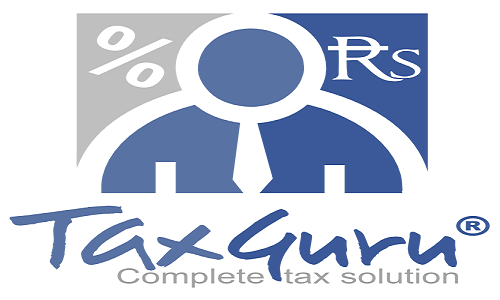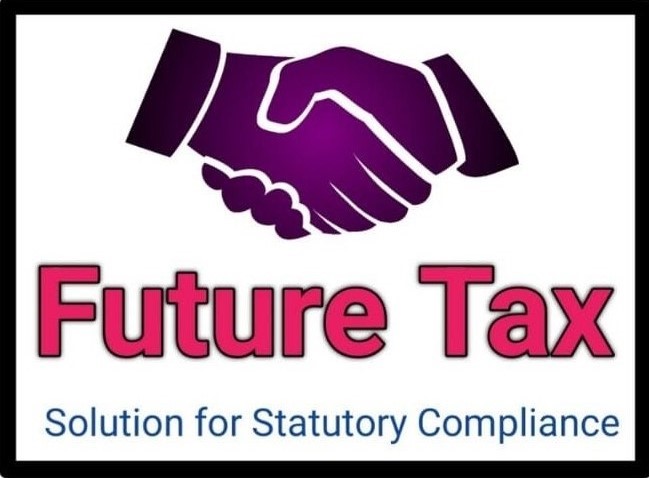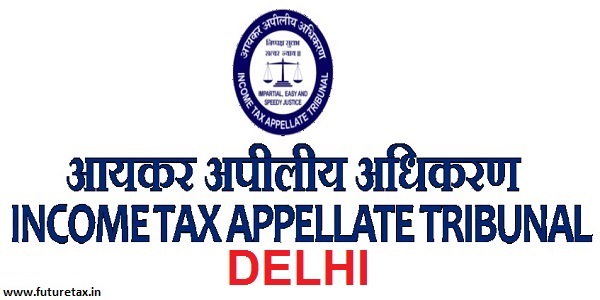
Why Income Tax Notices Are Issued: Reasons and Compliance Tips in Tamil
- Tamil Tax upate News
- November 7, 2024
- No Comment
- 92
- 17 minutes read
Let’s understand why notice under income tax issued : Key Reasons, Types, and Best Practices for Compliance
Summary: The rise in income tax notices recently can be attributed to advancements in the tax department’s data analytics and increased digital transactions, leading to more rigorous scrutiny. Notices may be issued due to mismatches in reported income and expenses, high-value transactions, delayed filings, discrepancies in investment gains, or errors in tax credits. For instance, lifestyle expenses that seem inconsistent with reported income or large cash deposits might trigger scrutiny. Common notices include Section 139(9) for defective returns, Section 143(1) for preliminary processing errors, and Section 148 for undisclosed income reassessment. Understanding each notice type and its purpose is crucial for a timely response. Best practices to address and prevent notices include verifying financial records, timely filing, and seeking professional advice for complex tax issues. Proactively cross-checking financial data, accurately filing tax returns, and staying informed on tax law updates can help minimize the risk of notices. By adopting these measures, taxpayers can ensure better compliance and reduce potential legal and financial risks.
Recently there has been noticeable increase in the issuance of I.T notices to taxpayers across various categories. This surge in the issue of such notices has primarily been because of an increase in the analytical abilities in data and reporting with a sharp eye towards increasing scrutiny in the context of tax compliance. The receipt of an income tax notice generally leaves most individuals puzzled and concerned.
It elaborates the reasons behind increased notices, gives details of all types of notices issued frequently, and provides strategies in response. Being informed and proactive will ensure that a taxpayer can confidently face such notices while preventing them altogether in the future. To a taxpayer, a businessman or those simply interested in getting a better insight into the tax landscape this guide provides practical insights in dealing with income tax notices.
1. Here’s an expanded and detailed explanation for each reason behind income tax notices:
1. Technological Advancements:
The income tax department has enhanced its technological structure with upgraded infrastructure through advanced data analytics, artificial intelligence, and machine learning. This enabled scanning of massive volumes of data for discrepancies with greater accuracy.
Such increased advancements make it easier for the department to flag mismatches in reported income, expenses, and other financial details. Things that would have gone unnoticed before are quickly found and, thus, more often result in tax notices.
1. Digital Transactions Increase:
Explanation: The increase in digital transactions as the government aims to create a cashless economy brings more taxpayer transactions under the department’s umbrella. Every digital transaction whether it is online banking UPI or mobile wallets leaves a digital footprint.
The digital transaction data would be able to easily check the reported income and expenditure. Digital transactions of a taxpayer having greater spending than reported income can lead to further investigations or even a notice from the tax department.
- Expanded reporting requirements.
Explainer: The recent changes to tax laws brought about more reporting responsibilities on third parties-like banks, financial institutions, employers, and registrars-liable to report certain financial transactions and details on TDS to the tax department.
It expands the data pool, which allows the tax department to cross-reference information appropriately. The discrepancies of a taxpayer’s return in respect of third-party reports are easily identified, increasing the scrutiny and potential issue of notices
1. Mismatch in Income and Expense Data:
Tax authorities closely monitor declared income in comparison to visible lifestyle expenses. If the taxpayer declares a low income but high expenditures such as luxury cars, expensive vacations, or high-end property, it will raise suspicion that there might be some difference. The department will send a notice to inquire about the source of funds that are supporting such expenditures if they are inconsistent with the declared income. This is usually so in cases of individuals who have highly unreported or illicit incomes, leading tax authorities to request documentation explaining how these expenses were funded
2. High-Value Transactions:
Large-value transactions, such as large cash deposits or purchases of high-value real estate or substantial payments through credit cards, raise alerts in the monitoring system of the income tax department. Most banks and financial institutions have to report most of these transactions to the relevant registrars. In case such large values appear, the tax department cross checks this information against the recorded income of the taxpayer for consistency. For instance, if a small income tax payer suddenly deposits a large amount in cash or buys an expensive property, notice may be issued to verify the origin and genuineness of the funds. Again this prevents the evasion of taxes through undistributed income or black money.
3. Non-Compliance with Filing Deadlines :
It is equally very crucial that people do their filing within time, specifically if the person belongs to the higher income group. Delayed filing or any form of complete non-filing results in suspicion on part of the tax department for it would reason that this non-compliance is probably on account of not wanting to declare some form of income, or possibly evade tax liabilities in some form. Late filings result in close examination and scrutiny by the department, including ascertaining and checking on the reasons assigned for such delay and subsequently the declared income. Repeated non-compliance or chronic delays will bring notices, along with penalties or fines. Failure to file returns when there is taxable income will also lead to legal consequences and the notice is a preliminary step towards enforcement actions.
4. Investment and Stock Transactions:
The tax department is becoming very careful concerning capital gains associated with selling stocks, mutual funds, or property. Most taxpayers do not mention or report incorrectly these gains. Taxing authorities’ cross-match the records in the Form 26AS or AIS to identify unreported gains from capital. Such example would include selling stocks the individual realized a gain that should be reported on his return however this was overlooked. Upon realization of these gains, the department sends a notice requiring the tax payer to correct the omission. Since all investment incomes and capital gains are reported in one centralized financial statements under reporting without creating suspicion cannot happen.
5. Types of Notices and Common Triggers:
6. Section 139(9) – Defective Returns:
Purpose: It is issued when a taxpayer presents an erroneous return, defective to the extent of error and omission. The meaning for defective returns could imply incompleteness of the return, incorrect figures in it, or discrepancies to be rectified.
Implications: The taxpayer is given an opportunity to resubmit and re-file the return within a defined period. If no notice is received, the whole return may be considered not valid, thus resulting in penalties and even full taxation reassessment. This particular notice is usually issued towards proper record-keeping compliance.
7. Section 143(1) – Preliminary Processing:
Purpose: After the return is filed, every return is subjected to preliminary processing under Section 143(1). It checks for simple errors and computes the total income and tax liability on the basis of the return filed.
Implications: the notice may highlight such things as mismatches of the TDS or the credit claims in the claim but which are appearing in form 26AS, the wrong correction in the computation of income. The demand on excess tax paid with regard to refund or a payment toward the demand if additional tax owes for it is an intimation. The taxpayer should check upon its details and make suitable rectifications or payments there under immediately.
- Section 143(2) Scrutiny Assessment:
Purpose: Issued when the assessing officer feels that the return filed by the tax payer requires a closer examination to establish its authenticity. This is the more intense and detailed form of scrutiny than the mere processing done under Section 143(1).
Implications: The taxpayer has to support the claims or declarations of the return with documentation and explanations, such as in the case of deductions, exemptions, or high-value transactions. Failure to comply with a Section 143(2) notice results in penalties, reassessment, or even legal proceedings. This kind of assessment makes sure that taxpayers report income correctly and claim only legal deductions.
1. Section 148 – Reassessment Notice:
Purpose: A notice is given to the assessee in case the income tax department feels that some income has not been returned or escaped its notice. There can be two reasons: Income may not have been disclosed and reported or extra income was found after initial assessment, which had gone undetected.
Implications: A notice for reassessment requires the taxpayer to file a return for the relevant assessment year with previously undisclosed income. The taxpayer is compelled to provide information and proof for the amended return. Failure to observe this notice or failure to declare extra income may be penalized or attract interest rates and also prosecution in grave cases of tax evasion.
1. Section 156 – Demand Notice:
Purpose: Issued when tax authorities are satisfied that further tax payment is recoverable. Demand notice under Section 156 typically originates due to mismatch between TDS credit claimed by the assessee and actual TDS records existing with the department.
- Incorrect TDS Claims: for instance, the claim of a taxpayer of the TDS amount exceeds that appearing in Form 26AS, a demand notice will be issued to collect the balance.
- Additional Tax Liability: If the tax paid under self-assessment or advance tax is found to be less than the amount finally assessed, a demand notice will be issued to collect the shortfall.
- Penalties or Interest: There could be a notice for demand since the interest under sections 234A, 234B, or 234C or penalties may have been added to the tax.
1. Section 131 – Inquiry for Evidence:
Purpose: Section 131 is invoked where there is a suspicion that there are undisclosed incomes or hidden assessts. Section 131 empowers tax authorities with powers identical to that of the civil court. It covers summons on any person, inspection of document, and attendance.
Common triggers:
- Unusual Transactions: Notably, a transaction that is either significantly large or suspicious in nature, like a very high-value property purchase or sizable cash deposits, may attract scrutiny to seek proof.
- Foreign Asset and Bank Account: There are also cases where foreign income or assets remained unreported. This naturally invites attention under Section 131 if international exchange of data highlights such foreign income and assets.
- Suspected Concealment: There are some cases of income concealment or major transactions not reported. Then Section 131 to obtain further clarification and documentary evidence.
3. Effective Response Strategies:
- Read and Understand the Notice
Objective: Before responding to any notice relating to income tax, the person concerned should, first of all, read and understand the notice themselves. Since every notice is intended to achieve some definite object and requirement, ignoring the same leads to making a wrong or incomplete reply to the notice.
How to Do It: Carefully go through the notice, keeping an eye on the subheads under which it is issued, details of any discrepancy noticed, and the type of documents or explanations called for. Knowing why the notice has been issued would help you collect the proper information to respond appropriately.
Objective: Income tax notices usually have a date for response. Not responding on time can lead to levying of penalties, interest charges, or further verification.
How to Do It: Put the date for response on your calendar or electronic calendar. Gather all the information requested well before this date. Submitting your response on time will show compliance and save you from having to go back to the tax department to answer follow-up questions.
- Verify Financial Records:
Objective: All the financial information to be used in the notice should be double-checked for accuracy. Many times, notices are issued due to mismatches between the taxpayer’s declarations and third-party reported information, such as TDS or Form 26AS details.
How to Do It: Verify the income tax return with the key records. Key records include Form 26AS for tax credits; bank statements; TDS certificates; and all other documents that pertain to income or deductions under dispute. All this helps in identifying errors and discrepancies so that they can be rectified in the reply and the correct information given to the tax authorities.
- Seek Professional Advice:
Objective: Tax issues can be quite complex, especially when they relate to detailed scrutiny or reassessment notices. Therefore, advice from a Chartered Accountant (CA) or tax expert ensures that you provide the accurate, compliant, and tax-current response.
How to Do It: For complicated ones, consult a CA or tax professional that can help you understand the notice, prepare the required documentations, and communicate effectively with the authorities involved. Professional advice can also be useful in appealing cases or legal proceedings where a proper substantiated response is necessary.
4. Preventive Measures:
1. Accurate Filing:
Purpose: Filing an accurate and complete income tax return is the first step to avoid notices from the tax department. Scanning with errors, omission, or inconsistency may provoke the tax department’s scrutiny. Hence, accuracy matters.
How to Do It: Double-check all the information in your return, including income, deductions, exemptions, and tax credits. Make sure that all sections are appropriately filled out and that your return reflects your financial records. Where possible, avoid estimates since you should rely on actual figures with support documents to minimize errors.
1. Cross-check financial data:
Purpose: Tax authorities cross-check the information you report from third-party sources like Form 26AS, Annual Information Statement (AIS) and TDS statements. Any mismatch there would attract a notice.
How to do it: Before filing the return, go through the following documents carefully. Form 26AS reflects all credits of TDS, taxes paid, and specified financial transactions, while the AIS gives a comprehensive view of income and investments. In this way, verifying both these forms against your return prevents any discrepancies in reporting incomes and tax credits.
- Staying Informed on Tax Laws:
Purpose: Tax laws and requirements for filing continue to be changed. With new rules on income declarations, exemptions, and reports submitted, being informed helps with compliance and the prevention of unintentional mistakes.
How to do It: Keep on your radar all changes to tax law by reading news from tax sources, a professional tax advisor, or seminar/webinar in taxation Maybe the requirements to report on digital assets are updated, or TDS limits thresholds have changed. By staying informed you can file returns that meet current regulations, reducing the likelihood of receiving a notice.




